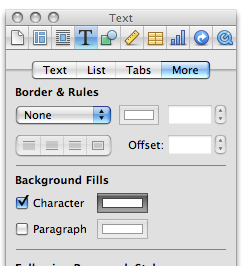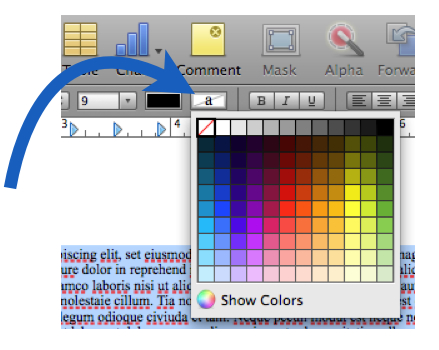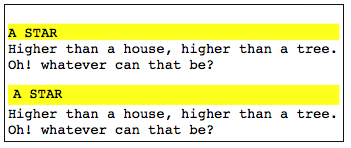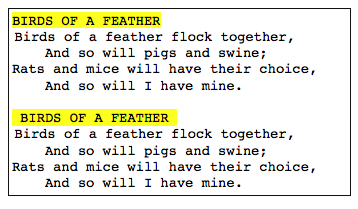In MS Word and Open Office Writer, there is a highlight feature in the toolbar. In iWork Pages, the same effect is achieved via the Text Inspector. Look under the More tab for the Background Fills options, Character and Paragraph.
In this recipe, we will look at how to highlight the text and also what to do when text sticks to the border of the colored highlight, making it look untidy.
Open the Text Inspector (Command + Option + I) and click on the T icon to open the Text window. This is where most text formatting operations are carried out.
Highlighting in iWork is done in the same way as changing the color of your text. Click on the color well and choose or create a color in the Colors window. In this case, however, we are adding a background color rather than coloring the text itself.

Follow the these steps:
Highlighting or color backgrounds can also be added via the format bar. Select text and click on the rectangle with the small letter "a", then choose a color from the Colors window.

The Background Fills options offer a choice of Character and Paragraph fills. In fact, when the Character fill is employed, you can select any part in the body of text—words, parts of words, sentences, and even spaces. When the background is added to the paragraph (Paragraph fill), the color band goes across the whole page, to the edge of your layout margins.
Doing this sounds nice and easy, but there is a small problem. The text may stick to the edges of the background color. We can leave it as it is, or we can try to improve the look by finding a way of pushing the text inside the color band.
When you use paragraph highlighting, click on Tabs in Text Inspector and increase the First Line indent by several points, fractions of an inch, or a centimeter. In the following example, the nursery rhyme A Star, the heading is highlighted by using the paragraph fill. The second heading is indented by four points and looks better inside the colored background.

When you use character highlighting, simply type one or two spaces just before and immediately after the highlighted text. In the following example, with the nursery rhyme Birds Of A Feather, the second heading has one space before and after the text. In both headings, character fill is used.

Highlighting can be applied not only to headings, but also to words or phrases within a body of text. Remember that contrasting colors should be used for highlighting—dark text on a light background and lighter text on a dark background.
Tip
If you want the background color to extend above and below the highlighted paragraph, increase the spacing before and after the paragraph. Spacing options are under the Text tab in Text Inspector.
If you find it annoying when you have to switch from one Inspector to another to perform different types of operations, remember that you can have more than one Inspector windows open at the same time. Under the View menu, choose New Inspector, and set, say one for Text and another for Graphic.
